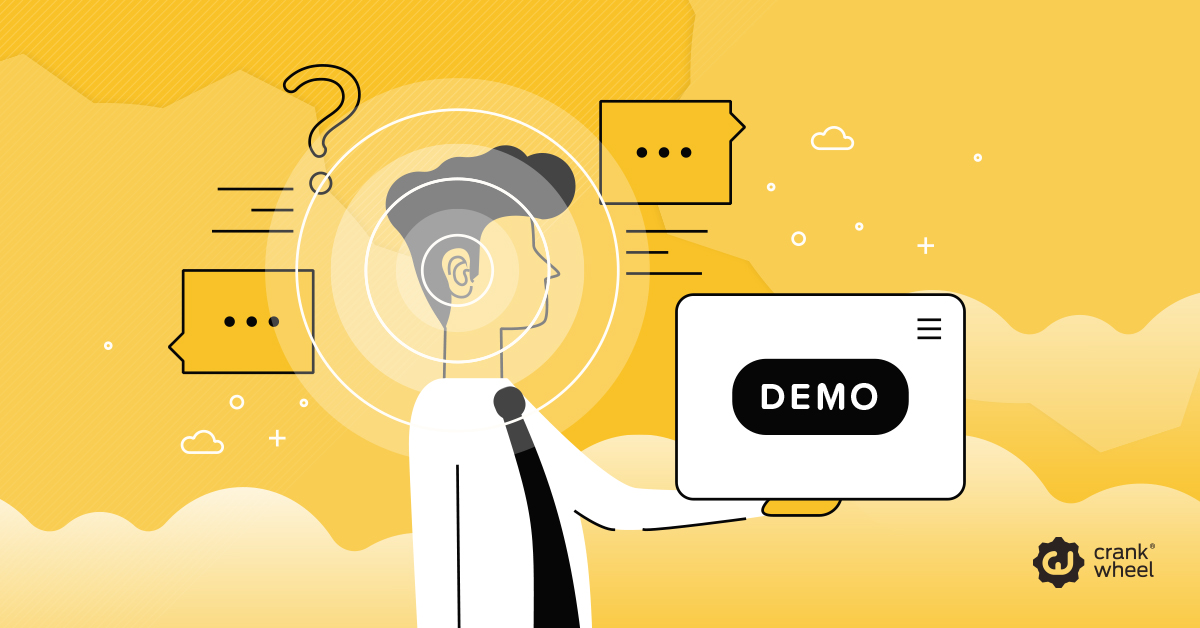How to use active listening and Instant Demos to increase conversion rates
Conversion rates have never been more important.
Winning new customers, or getting an existing customer to spend more, has always been a crucial sales metric. But now more than ever, companies need to secure as much new revenue as possible.

Achieving that means ensuring your sales team are as effective as possible. Before the impact of this global pandemic, many sales leaders had concerns about team effectiveness. Now that the economy has changed (not in every sector, but across many), those concerns are more prominent.
A New Normal in Sales: What Can Sales Leaders Expect?
Whether teams are back in the office or working from home (WFH), sales leaders have different expectations. Hitting targets has never been so important, but those targets have probably changed since the start of 2020.
Sales leaders expect teams to have adapted to these new circumstances. Maintained relationships with key accounts, and kept as much of the pipeline intact as possible. Across many sectors and countries, confidence is increasing. Spending is increasing, or at least not dropping anymore. This won’t be an easy recovery, and it will be uneven.
Countries more seriously impacted by the pandemic will recover more slowly. Expect ups and downs. If 2020 has taught us all the same lesson: Expect the unexpected. So in some ways, there is no playbook for this ‘new normal’; and we, as a species and civilisation, can’t quite say what that is truly going to look like. Or how long it will take for a new normal to emerge from everything that is happening.
For now, many of us are making things up as we go along. We need to acknowledge that. People are changing careers, and in some sectors companies are folding fast as a result of major economic upheaval. Governments are printing money, and handing it out in unprecedented amounts, simply to keep economies afloat.
Although it’s similar to the last global recession, there are also many differences too. It has happened considerably quicker. It also started as an unexpected shock to the economy, instead of in the financial sector, as per the 2007-08 recession.
There isn’t a playbook for this recession, or pandemic.
Under these strange new circumstances, this unique operating environment, many sales leaders are rightly wondering, “How can we adapt, survive and thrive?”
How Can Sales Leaders Adapt?
Recognise and acknowledge the world has changed.
Sales has changed. Depending on the sector(s) you work with, your client’s might be unaffected (which is the ideal outcome in these unprecedented times), have reduced budgets, or have gone out of business.
Depending on how sector(s), and specific clients and prospects have been affected by Covid-19, there is a sliding scale of reactive approaches sales teams can take. A fast, reactive approach might have been necessary. Or a more measured, gradual one.
Even if no immediate changes were needed, sales leaders should make tactical adjustments for the last quarter and into 2021. New economic realities make change a necessity, for sales leaders and teams.
Adapting doesn’t necessarily mean creating new strategies. One of the most effective ways is to generate more revenue from the pipeline you already have. How do you achieve that?
With active listening and instant demos, we have seen clients increase conversion rates.
Close more deals, faster. In some cases, clients have cut sales cycles in half. Doubling the number of deals closed and new clients won.
How to use Active Listening and Instant Demos
#1: Ask Smart Questions
When it comes to qualifying leads, smart questions are crucial for identifying viable clients.
Smart questions also demonstrate active listening skills. Questions such as:
- What problem(s) are you trying to solve?
- What has prompted you to solve this problem?
- What happens if it isn’t solved?
- What kind of timescale are you looking to implement?
- What do you personally gain or lose if this is solved, or isn’t solved?
- Do you have senior/owner or C-suite support for implementing this solution?
- Do you have a budget for this?
- How many people do you need to involve to sign-off on that budget?
#2: Listen Proactively (Active Listening)
Active listening is quite simple, as a concept.
It means really listening to someone, instead of simply waiting to say what you want to say. Salespeople who talk more than they listen often struggle to close deals.
Instead, try the following:
- Ask smart questions (see above);
- Actually listen to your prospect;
- Feedback/confirm your understanding of what they said;
- Ask relevant follow-up questions.
#3: Leverage LinkedIn
- Optimize LinkedIn profiles. Clearly show how you add value, how clients can get in touch, and how you solve problems for clients.
- Use LinkedIn Sales Navigator. If you aren’t already subscribing, we recommend it. LinkedIn Sales Navigator starts with a 30-day free trial, and is $64.99 per month after that. You can send 20 InMail messages per month.
- Publish content of your own (articles and posts; and work with a marketing team or outsourced supplier if you don’t have time to write this content yourself), and engage with other people’s content, especially sales prospects. Doing this before sending messages is one of the most effective ways to leverage LinkedIn.
We have published more articles on this, to help you make the most of it.
#4: Use Instant Demos
Give every lead you engage with on LinkedIn the option, first and foremost of an Instant Demo.
With CrankWheel, as one of our glowing reviews points out, a prospect can “join a screenshare with no complicated installs, meeting codes, or other hassles.”
This way, it makes the sales cycle shorter, and therefore ensures sales team members can sell more, making instant demos part of the team culture and processes.
CrankWheel: Cut your sales cycle in half with instant screen-sharing. Go from two or more sales calls to one: Become a one call close sales team.
